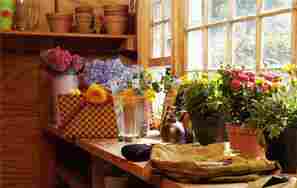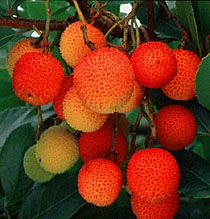
MILLIWAYS NURSERIES
Solutions: Clay | Sandy | Wet | Dry | Dark dry wet shade| Edible | Acid soil | Windy | Hedging |
HOME : Quality Irish grown plants for house & garden. Garden supplies, seeds, bulbs, sundries, rare and new varieties old ones too!
 |
Strawberry TreeArbutus unedoArbutus, (Strawberry Tree) Habitat. In the woods at Kerry found growing wild the beautiful evergreen shrub, known as the Arbutus, or Strawberry Tree (Arbutus unede), which for its attractiveness should gain a place in every well-planted garden. It would, indeed, be hard to find any other ornamental shrub or tree that has such a cheerful appearance throughout the autumn and early winter, when its dense mass of greenery tinged with red stems and tipped leaves, cab coverd with a profusion of flower clusters and ruddy, round fruit resembling small strawberries. Edible, just about When eaten in quantities this fruit is said to be narcotic, and the wine made from it in Spain has the same property. The tree is common in the Mediterranean region, and the fruit was known to the ancients, but according to Pliny (who gave the tree the name of Arbutus) was not held in much esteem, as the name implies (un ede=one 1 eat), the fruits being considered so unpalatable, that no one tasting them for the first time would be tempted to repeat the experiment. Nevertheless, there is some evidence that at one time the fruit was an article of diet with the ancients. Horace praises the tree for its shade and Ovid for its loads of 'blushing fruit.' Virgil recommends the young shoots as winter food for goats and for basket-work.
In Spain, a sugar and spirit have been extracted from the fruit and a wine made from it in Corsica. In the neighbourhood of Algiers it forms hedges, and in Greece and Spain the bark has been used for tanning. The wood of the tree makes good charcoal.
€9 in a good 2-3 litre pot size well branched larger availabe but email first.
|